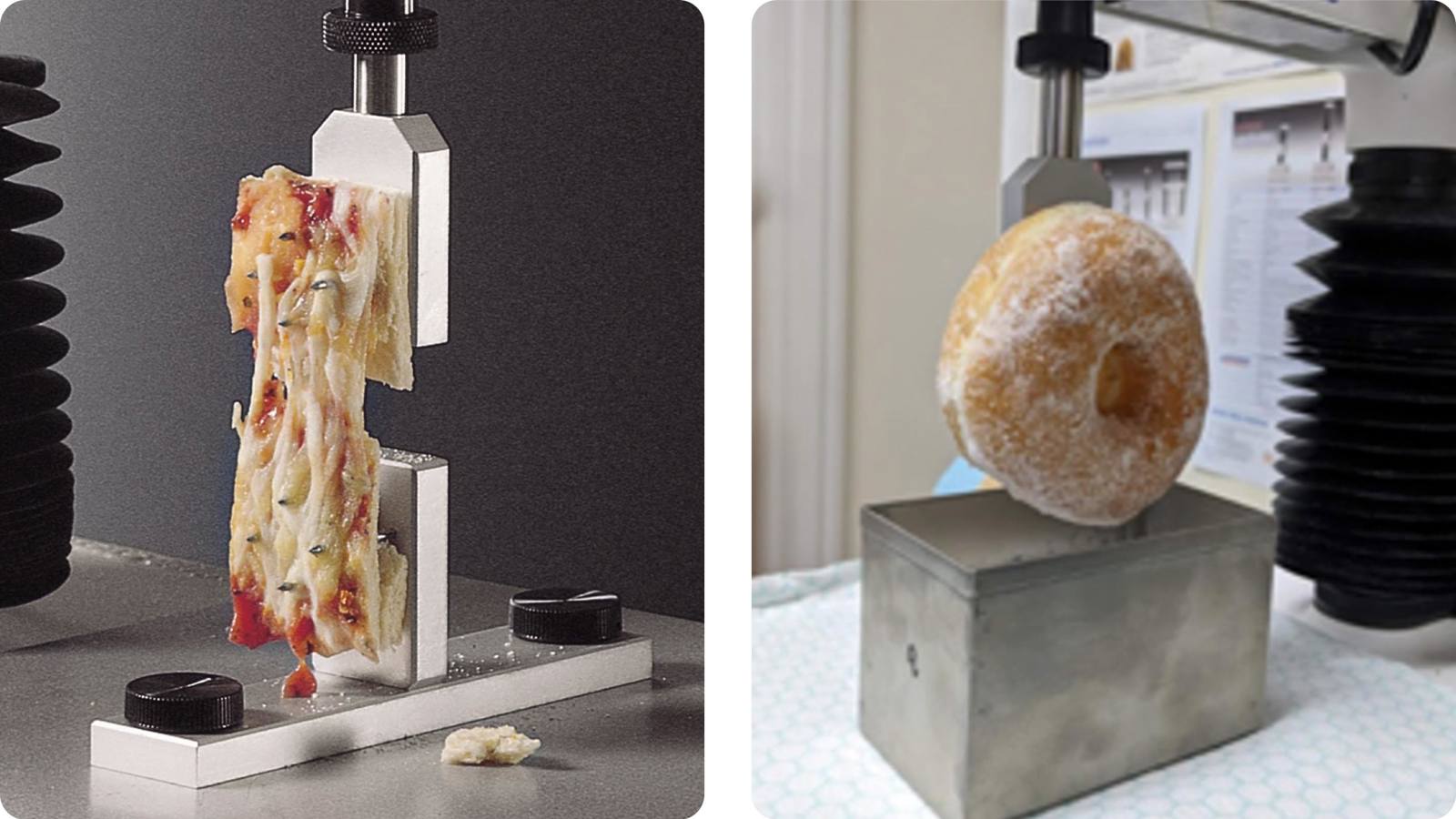
Texture analysis in action: Doughnuts and their coatings

The addition of a doughnut icing coating is important for several reasons:
- Aesthetics: Doughnuts are often decorated with icing or other toppings to enhance their visual appeal. A well-performing icing coating should have a smooth and even texture, with no cracks or bubbles. This will make the doughnuts more visually appealing to customers and increase their perceived value.
- Shelf life: A well-performing icing coating can also help extend the shelf life of the doughnut by creating a barrier that prevents moisture loss and extends freshness. This is particularly important for doughnuts that are made in large quantities and need to be stored for several days before being sold.
- Ease of production: A good icing coating should be easy to apply and should not require a lot of time or labour to achieve a desirable appearance. This will help streamline production and reduce costs for the bakery or manufacturer.
- Flavour: The icing coating can also contribute to the overall flavour of the doughnut. A poorly performing coating may not evenly distribute the flavour throughout the doughnut, leading to an inconsistent flavour experience for the customer.
So where does a Texture Analyser come in? Lately we have used the Texture Analyser in a more novel way – to support a doughnut in order to measure icing retention. This film formation measurement reflects the density, viscosity and surface adhesion properties of the icing on the doughnut surface. Coating thickness is an important property for a doughnut and must be consistent between batches. This is a particularly important test to carry out when certain flavours or colours affect the icing or base product.
We used the Pizza Tensile Rig (which was originally developed for the measurement of pizza tug) to mount the doughnut in order to perform tests comparing different icings and their coating weights onto the doughnuts as a result of their different consistencies.

The method outlined here is quick and simple to carry out, but relies on uniform sample dimensions for comparative purposes. If this is not possible, a high number of repeats must be carried out to make up for variation in results by providing an averaging effect. It is equally important for the icing depth and container dimensions to remain the same for each test. This method is one of a new selection that has recently been put into the application study section and projects within Exponent Connect software.
New Application Studies in our latest software version
- Comparison of the adhesive properties of handcream, body butter, Vaseline and moisturising cream
- Dip test of a doughnut into icing to measure coating retention
- Comparison of the adhesive properties of icing, caramel sauce and buttercream
- Firmness and toughness measurement of plant based and standard fish fingers
- Firmness and toughness measurement of plant based and standard tuna
- Measurement of the adhesive properties of lip gloss samples and petroleum jelly
- Comparison of the adhesive properties of hair wax, gel and pomade
- Bend testing of coated paper drinking straws soaked in water for a longevity assessment
To obtain access to these, you will need to download the latest software version.








